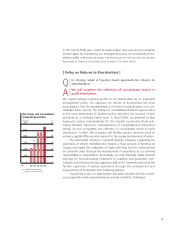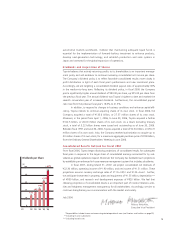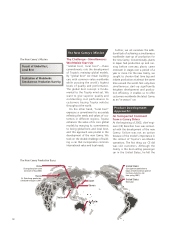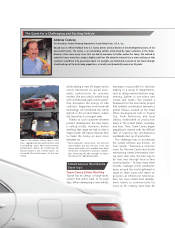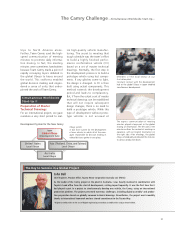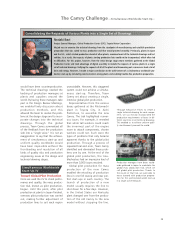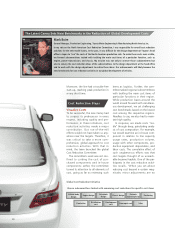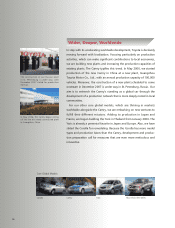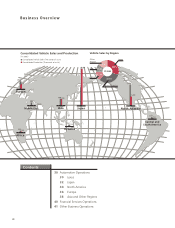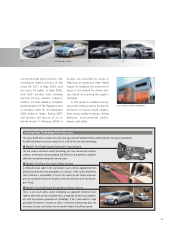Toyota 2006 Annual Report Download - page 24
Download and view the complete annual report
Please find page 24 of the 2006 Toyota annual report below. You can navigate through the pages in the report by either clicking on the pages listed below, or by using the keyword search tool below to find specific information within the annual report.
22
Toyota, attempting to do so on such
a large-scale global project was
unheard of.
The Design Review Meeting was the
prime mover in the creation of the set
of master technical drawings. Team
Camry threw out the commonplace
idea that preparing technical drawings
is the job of the design department.
The drawings were the product of
know-how from a range of opera-
tional functions. Our production and
purchasing departments took part in
the Design Review Meetings and were
fully involved in creating the drawings.
As a result, spurred by the pressure of
knowing design changes were not
allowed after the completion of the
drawings, Team Camry created high-
quality actual components with
almost no defects and was able to
build a very highly finished CV in a
short period. Having completed the
CV, the Team Camry members felt
success was within reach.
One Component, One Drawing
In conjunction with the preparation
of master technical drawings, Team
Camry took on another challenge:
the strict limitation of every compo-
nent to one drawing. In some cases,
different plants had different draw-
ings for the same component. The
disparities had come about because
of adaptations to differing produc-
tion equipment and methods among
plants and suppliers. However, such
diversity was an obstacle to the
establishment of universal quality and
the enhancement of productivity.
Only having one drawing for each
component makes it easier to achieve
uniform quality and synchronize
operations internationally.
A one-sided attempt to squeeze
each component into a single blueprint
Simultaneous Worldwide
Start-Up III
Limiting Each Component to a Single Drawing
Hidekazu Otowa
General Manager, Body Engineering Division 1, Toyota Development Center 1, Toyota Motor Corporation
Common technical drawings for each component were a precondition for the realization of a simultaneous
worldwide production start-up. My task was to prepare a single set of design technical drawings for a
high-quality vehicle body that brought together and reflected the different production requirements of
plants in different regions. To achieve that, I not only visited Toyota plants the world over, I went to local
suppliers to explain the design concept and the importance of having a single master technical drawing for
each component of the new-model Camry. In the development process, we worked to solve problems
rapidly through the sharing of all types of information, doing our utmost to avoid design changes in the
final stages. There was some trial and error, but our successful creation of a high-quality car gives me the
greatest satisfaction.
With the aim of realizing development
without a prototype vehicle, highly fin-
ished technical drawings were created
through collaboration among the design
department, the production department,
suppliers, and other departments at
Design Review Meetings.
Digital engineering, using simulation tech-
nology for the creation of virtual vehicles,
played a crucial role in orchestrating the
development of the new Camry at multi-
ple sites around the world. Development Stages of the New Camry
Prototype vehicle FS vehicle
(final prototype vehicle)
CV
(performance confirma-
tion vehicle)
Pilot production vehicle
(mass production confirma-
tion vehicle)
New model developed without a prototype vehicle
××
⇒ ⇒ ⇒



